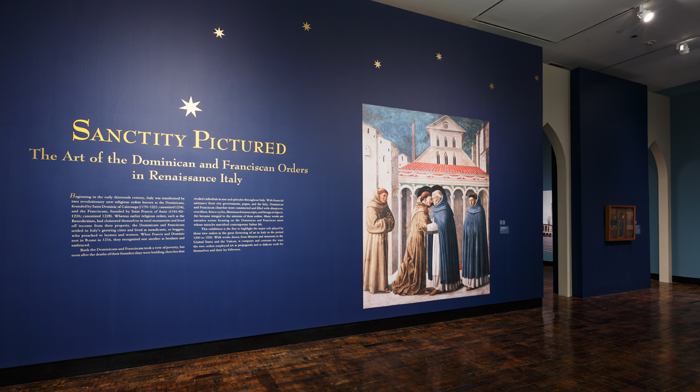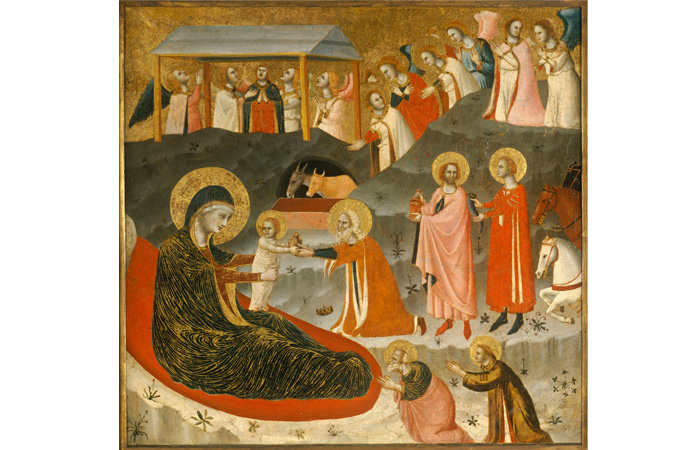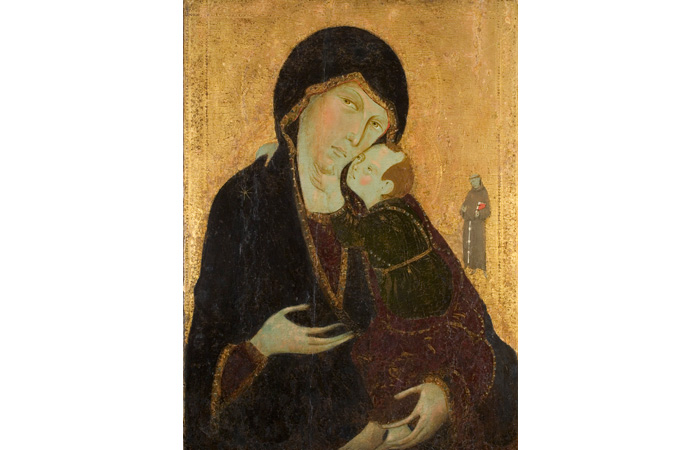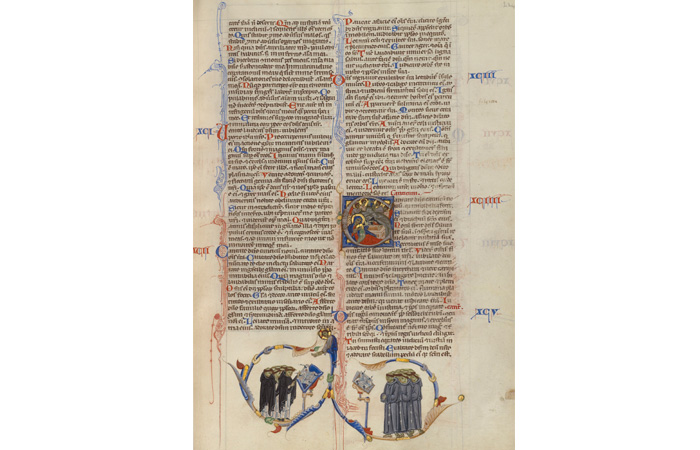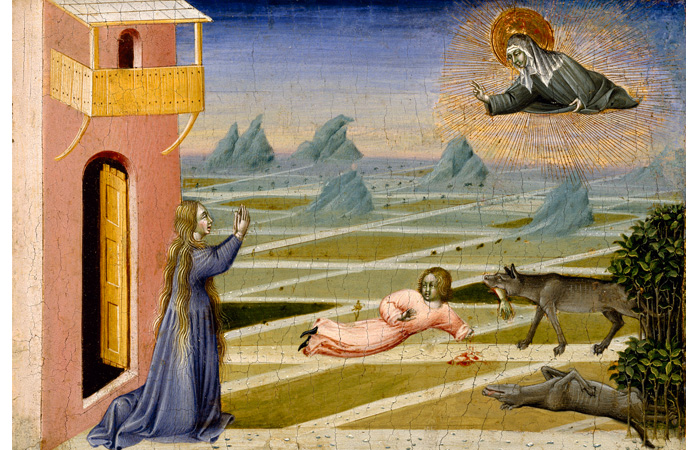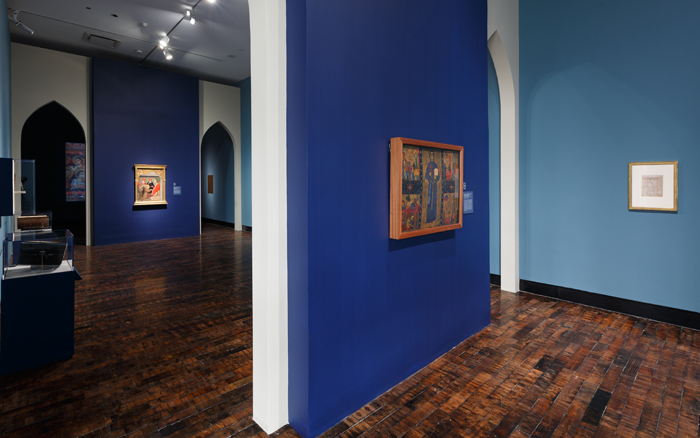Beginning in the early thirteenth century, Italy was transformed by two innovative new religious orders known as the Dominicans, founded by Saint Dominic of Caleruega (1170–1221; canonized 1234), and the Franciscans, founded by Saint Francis of Assisi (1181/82–1226; canonized 1228). Whereas earlier religious orders, such as the Benedictines, had cloistered themselves in rural monasteries and lived off income from their property, the Dominicans and Franciscans settled in Italy’s growing cities and lived as mendicants, or beggars, who preached to laymen and women. When Francis and Dominic met in Rome in 1216, they recognized one another as brothers and embraced.
Both orders took a vow of poverty, but soon after the deaths of their founders they were building churches that rivaled cathedrals in size and splendor throughout Italy. With financial assistance from city governments, popes, and the laity, Dominican and Franciscan churches were constructed and filled with altarpieces, crucifixes, fresco cycles, illuminated manuscripts, and liturgical objects. Art became integral to the missions of these orders. Many works are narrative scenes focusing on the Dominican and Franciscan saints whose miracles sanctified contemporary Italian life.
This exhibition is the first to highlight the significant role played by the two major mendicant orders in the great flowering of art in Italy in the period 1200 to 1550. With works drawn from libraries and museums in the United States and the Vatican, it compares and contrasts ways the Dominicans and Franciscans employed art as propaganda and as didactic tools for themselves and their lay followers.
Mire este video en español para aprender más sobre la exhibición La Santidad en Pintura
Exhibition gallery
Resources
Thank you to our exhibition supporters




